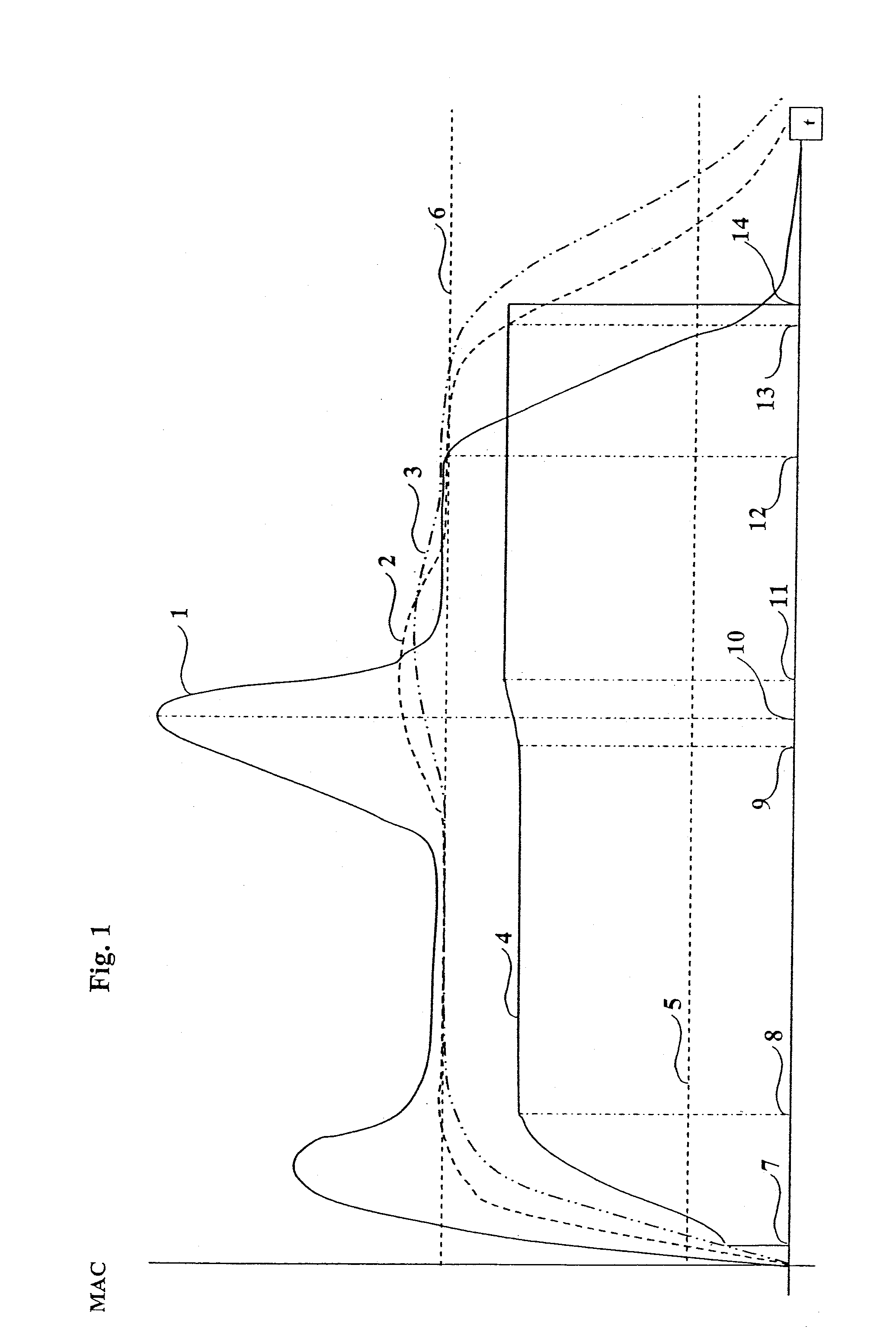Monitoring device for a therapy device and process
a monitoring device and therapy technology, applied in the direction of respiratory device testing, breathing protection, signalling system, etc., can solve the problems of false negative alarm, detecting the actual error only late at best, and triggering alarm errors, so as to achieve the greatest possible safety for the patient
- Summary
- Abstract
- Description
- Claims
- Application Information
AI Technical Summary
Benefits of technology
Problems solved by technology
Method used
Image
Examples
Embodiment Construction
[0043]Referring to the drawings in particular, the conditions corresponding to MAC values at the beginning of an anesthesia are shown at the left-hand edge of the graphic view in FIG. 1. It can be recognized from FIG. 1 that the inspiratory MAC value, MACinsp (the corresponding curve is designated by 1 and is drawn as a solid line), is raised rapidly to a prominent level for the purpose of rapidly inducing anesthesia. The expiratory MAC value, MAC, (the corresponding curve is designated by 2 and is drawn as a broken line), also increases with a time delay. The expiratory MAC value, MACexfilt (the corresponding curve is designated by reference number 3 and is drawn as a two-dot broken line), which is filtered as a function of its action beyond the blood-brain barrier, rises with an even longer delay.
[0044]The monitoring device of the anesthesia device, by means of which the schematic curves in FIG. 1 were generated, has been set such that a lower warning limit MAClowtrsh (designated ...
PUM
 Login to View More
Login to View More Abstract
Description
Claims
Application Information
 Login to View More
Login to View More - R&D
- Intellectual Property
- Life Sciences
- Materials
- Tech Scout
- Unparalleled Data Quality
- Higher Quality Content
- 60% Fewer Hallucinations
Browse by: Latest US Patents, China's latest patents, Technical Efficacy Thesaurus, Application Domain, Technology Topic, Popular Technical Reports.
© 2025 PatSnap. All rights reserved.Legal|Privacy policy|Modern Slavery Act Transparency Statement|Sitemap|About US| Contact US: help@patsnap.com


